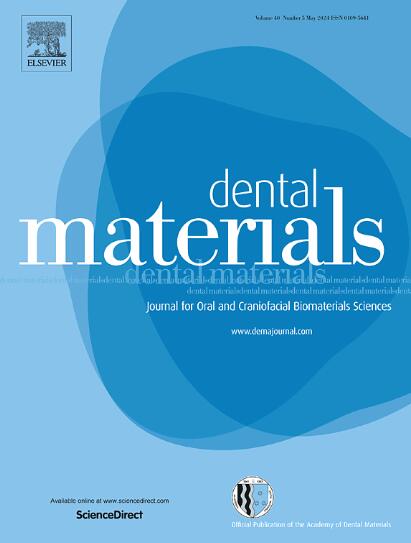牙髓组织工程和再生研究生物材料特性和生物潜力评估指南。
IF 4.6
1区 医学
Q1 DENTISTRY, ORAL SURGERY & MEDICINE
引用次数: 0
摘要
背景:牙髓再生是一个复杂且不断发展的领域,需要生物材料能够支持牙髓的多种功能,包括免疫防御、感知、血管化和修复性牙本质生成。牙髓再生需要协调软结缔组织、神经元、血管和矿化结构的形成,因此需要具有定制生物和机械特性的材料。许多生物材料已进入临床实践,还有一些正在开发用于组织工程应用。材料的成分和广泛的特性,如表面特性、降解率和机械强度,对细胞行为和组织结果有重大影响。目的:本文旨在介绍牙髓组织工程的生物学基础、潜在的测试方法及其优势和局限性。它为制定研究方案提供指导,以评估生物材料的特性及其对细胞和组织行为的影响,支持有效牙髓再生策略的进展。本文章由计算机程序翻译,如有差异,请以英文原文为准。
Guidance for evaluating biomaterials’ properties and biological potential for dental pulp tissue engineering and regeneration research
Background
Dental pulp regeneration is a complex and advancing field that requires biomaterials capable of supporting the pulp’s diverse functions, including immune defense, sensory perception, vascularization, and reparative dentinogenesis. Regeneration involves orchestrating the formation of soft connective tissues, neurons, blood vessels, and mineralized structures, necessitating materials with tailored biological and mechanical properties. Numerous biomaterials have entered clinical practice, while others are being developed for tissue engineering applications. The composition and a broad range of material properties, such as surface characteristics, degradation rate, and mechanical strength, significantly influence cellular behavior and tissue outcomes. This underscores the importance of employing robust evaluation methods and ensuring precise and comprehensive reporting of findings to advance research and clinical translation.
Aims
This article aims to present the biological foundations of dental pulp tissue engineering alongside potential testing methodologies and their advantages and limitations. It provides guidance for developing research protocols to evaluate the properties of biomaterials and their influences on cell and tissue behavior, supporting progress toward effective dental pulp regeneration strategies
求助全文
通过发布文献求助,成功后即可免费获取论文全文。
去求助
来源期刊

Dental Materials
工程技术-材料科学:生物材料
CiteScore
9.80
自引率
10.00%
发文量
290
审稿时长
67 days
期刊介绍:
Dental Materials publishes original research, review articles, and short communications.
Academy of Dental Materials members click here to register for free access to Dental Materials online.
The principal aim of Dental Materials is to promote rapid communication of scientific information between academia, industry, and the dental practitioner. Original Manuscripts on clinical and laboratory research of basic and applied character which focus on the properties or performance of dental materials or the reaction of host tissues to materials are given priority publication. Other acceptable topics include application technology in clinical dentistry and dental laboratory technology.
Comprehensive reviews and editorial commentaries on pertinent subjects will be considered.
 求助内容:
求助内容: 应助结果提醒方式:
应助结果提醒方式:


